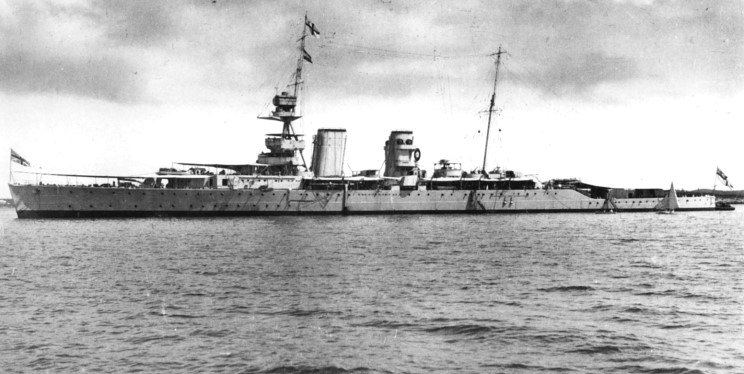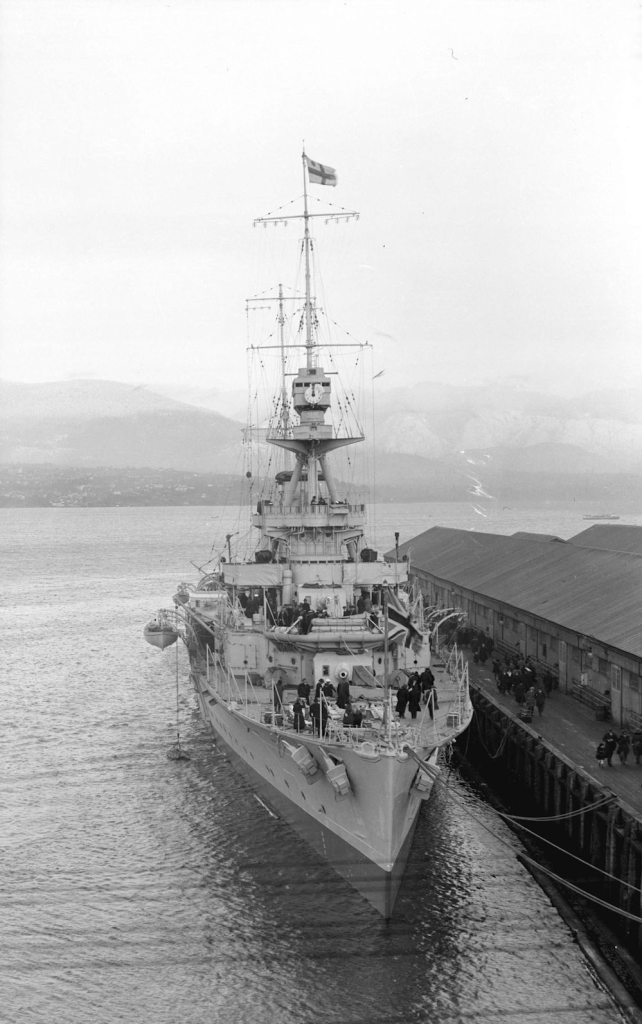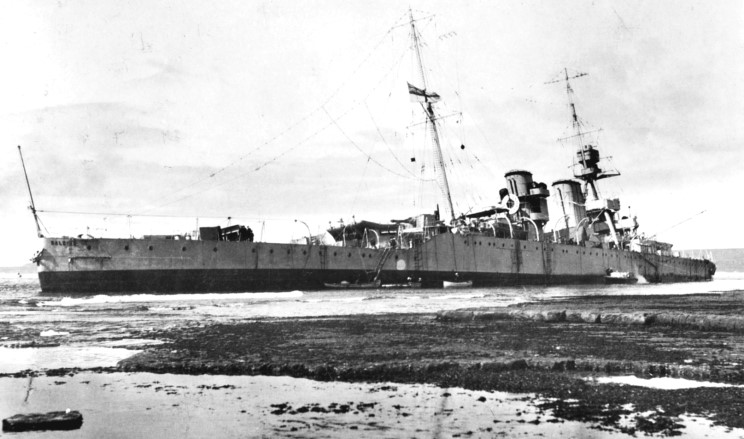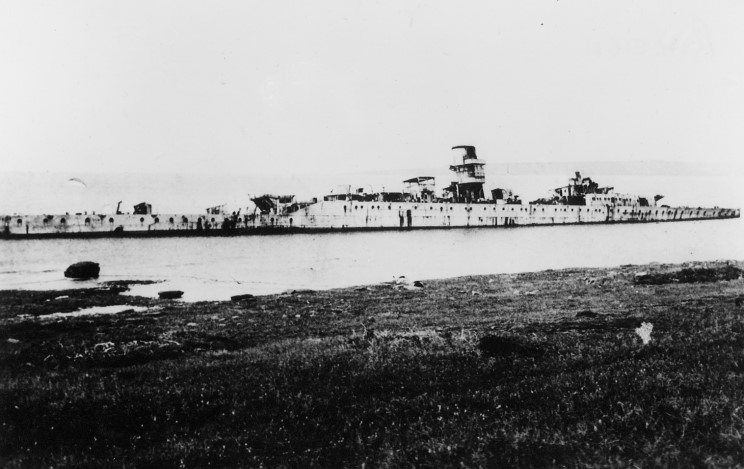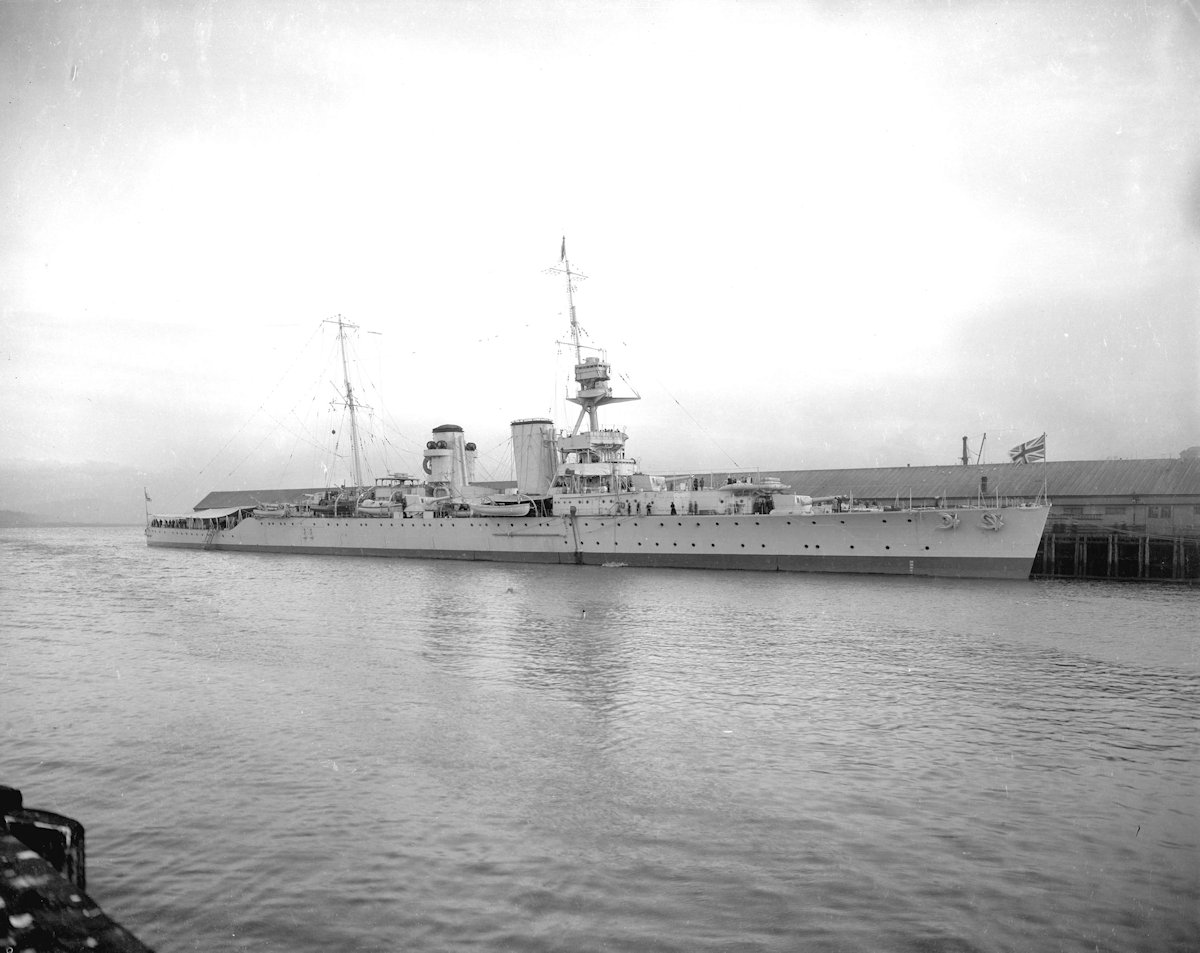British Heavy Cruiser HMS Raleigh
HMS Raleigh was a Hawkins-class heavy cruiser (along with her sister ships HMS Hawkins, Effingham, Frobisher and Vindictive), ordered in 1915 under the First World War emergency programme and built at Devonport Dockyard. She was laid down in 1916, launched on 28 September 1919, and commissioned in 1921. Named after the Elizabethan explorer Sir Walter Raleigh, she represented a new generation of large cruisers designed to hunt commerce raiders. The Hawkins-class combined long range, high speed, and heavy 7.5-inch guns to protect British trade routes across the world’s oceans.
On completion, Raleigh was assigned to the North America and West Indies Station, serving as flagship to Admiral Sir William Pakenham, Commander-in-Chief of the station. Based at Bermuda and Halifax, she carried the admiral on cruises to Canada, the United States, and the Caribbean. Her duties were both strategic and diplomatic, showing the flag and safeguarding British influence in the western Atlantic.
Her career was short-lived. On 8 August 1922, while bound for Hudson Strait, Newfoundland, she ran aground in thick fog on the rocks at Point Amour, near L’Anse Amour in the Strait of Belle Isle. Her hull was torn open and left stranded hard on the reef. Twelve men died in the accident, but the rest of her crew of about 700 reached the shore safely. Salvage attempts quickly proved futile and the wreck was left where she lay.
A court-martial followed to determine responsibility for the loss. Captain Arthur Bromley and his navigator were found guilty of negligence in navigating through fog in dangerous waters, ending Bromley’s career. Admiral Pakenham, though embarked as Commander-in-Chief, was not held accountable, since the handling of the ship remained the responsibility of the captain and navigator.
The wreck of Raleigh remained conspicuously visible for several years, her hull apparently intact and upright despite the damage below the waterline. Passing ships could see her stranded on the coast, an embarrassing reminder for the Royal Navy of the incident. In 1926 the Board of Admiralty judged the wreck both unsightly and a hazard to navigation. A survey concluded that refloating her was impossible, and so the cruisers Capetown and Calcutta were ordered to remove as much as possible before demolishing the remains with explosives. By the end of their work the wreck was no longer recognisable as a Royal Navy warship, though fragments of her hull still remain at the site.
Specifications – HMS Raleigh (as built, 1921)
- Class & type: Hawkins-class heavy cruiser
- Displacement: standard ~9,750 tons; full load ~12,200 tons
- Length: 605 ft (184 m)
- Beam: 65 ft (19.8 m)
- Draught: 19 ft (5.8 m)
- Propulsion: 4 shafts, steam turbines, 12 Yarrow boilers, 60,000 shp
- Speed: 30 knots (56 km/h; 35 mph)
- Range: 5,400 nmi at 14 knots
- Complement: ~700 officers and men
Armament:
- 7 × 7.5-inch (190 mm) guns (single mounts)
- 6 × 3-inch (76 mm) AA guns
- 2 × 2-pounder (40 mm) AA guns
- 6 × 21-inch (533 mm) torpedo tubes
Armour:
- Belt: 1.5–3 in (38–76 mm)
- Deck: up to 1.5 in (38 mm)


